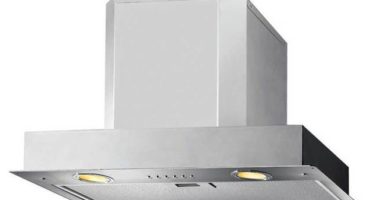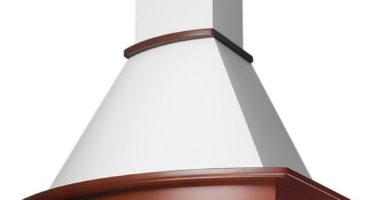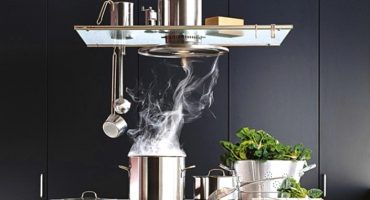- Types of hoods by design
- The principle of operation of different models
- How to correctly calculate the hood power for a kitchen
- Calculation Examples
- Consideration of additional factors
- Complicating factors
- Power consumption and performance
- The relationship of noise and power
- Operating modes
- How does size affect device power?
- Examples of models of different power
The range of cooker hoods in the store is amazing. Models differ in size, appearance and, of course, power and performance. It is the hood power that is the decisive factor when choosing a suitable device, since this kitchen appliance is taken not only for the sake of external beauty, but for the declared functions.
Types of hoods by design
In appearance and design, all hoods can be divided into several categories:
- Flat pendant. The easiest and budget option. Such models do not differ in high performance and are suitable for small kitchens.
- Recessed. Medium power models that install a headset in a hanging cabinet. Suitable for small and medium (10-12 m2) premises.
- Dome. They are very popular due to their attractive appearance and high performance.
- Island. The most powerful models that are installed in spacious studio apartments. They are mounted directly on the ceiling, directly above the table, located in the center of the room.
- Fireplace. Domes are reminiscent of their appearance, but they have great performance. They are usually installed in the corner of a large living room or studio.
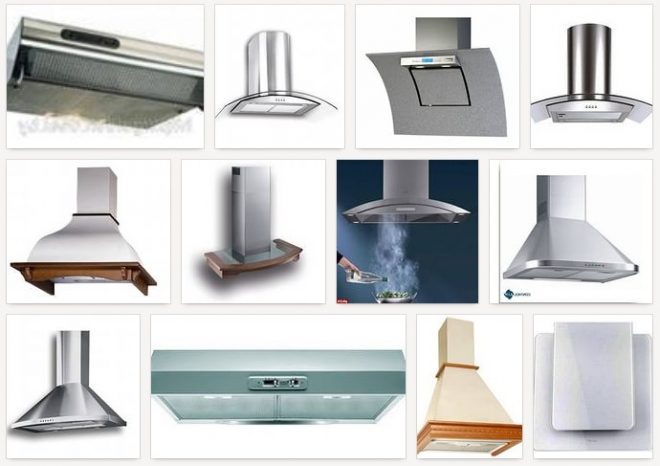
Types of hoods
The principle of operation of different models
By the method of air purification, all devices are divided into two categories:
- Recirculation. These devices pass air through the filter system and return it to the room. The recirculation hood is easier to install, it does not require a connection to the duct and, as a rule, is inexpensive. The minus of the model is low performance and the need to change the built-in filters.

Island extractor hood recirculation
- Flowing. These models are connected to the ventilation shaft using an air duct. They are characterized by high power and do not need additional components. Such hoods are considered more effective because air saturated with aromas or smoke is completely removed from the room.
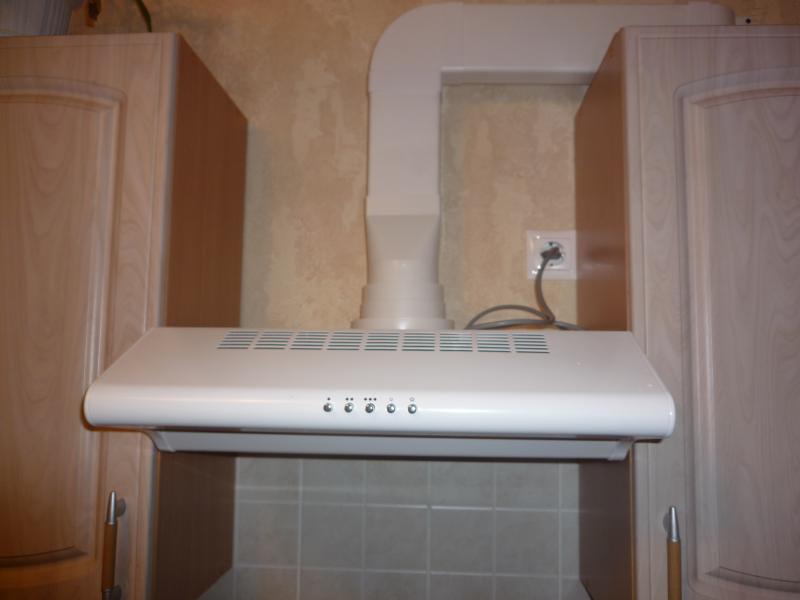
Flat exhaust hood
Some models can work in both modes. When installing them, the owner should determine which option is more suitable for him in a particular situation.
How to correctly calculate the hood power for a kitchen
To determine the performance of the device, you should find out what functions it should perform in the house. The operation manual for the hood states that it should clean or draw contaminated air. According to sanitary standards, the air in the room should be completely updated 12 times per hour. Accordingly, the performance of the device should provide the necessary air exchange.
The calculation of the hood power for a standard kitchen without taking into account complicating factors is performed according to the formula:
Q = S * H * 12
where Q is the minimum required power of the device; S is the area of the room; N - room height; 12 - coefficient of air exchange.
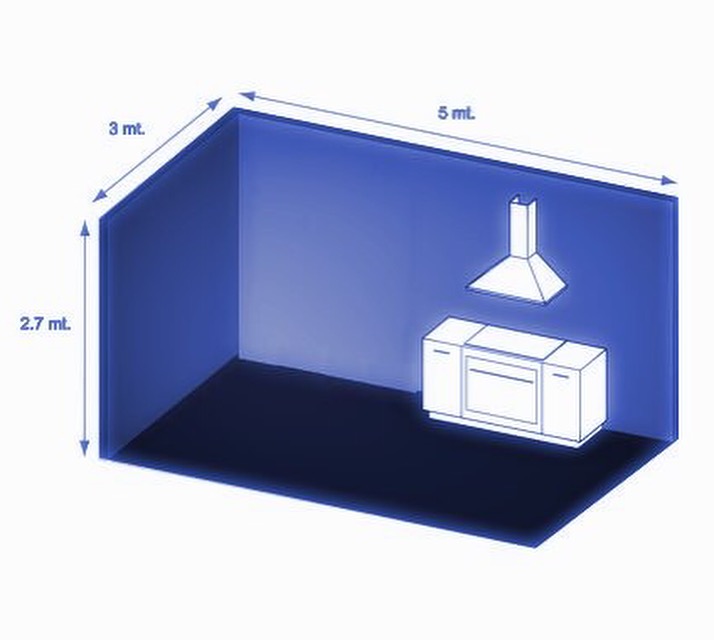
Room volume
Calculation Examples
Let's look at examples of how to correctly calculate power:
For the calculation we take a typical Khrushchev kitchen with an area of 6 m2. The standard ceiling height in such rooms is 2.5 m.
The calculation will look as follows:
S = 6 m2; H = 2.5 m; Q = S * H * 12 = 6 * 2, 5 * 12 = 180 m3/hour
The final figure is the maximum power of the device, which will provide the necessary air exchange.
Consider, for example, the kitchen in an improved apartment. Its area is 9 m2, ceiling height 2.8 m2.
The calculation will be as follows:
S = 9 m2; H = 2.8 m; Q = S * H * 12 = 9 * 2.8 * 12 = 302.4 m3/hour.
It is with such declared power that the hood will provide effective air purification in the room.
It should be noted that the given power calculator is very conditional. It does not take into account many factors: open doors or windows, headsets, which occupies part of the volume, an abundance of decorative elements, shelves and niches.
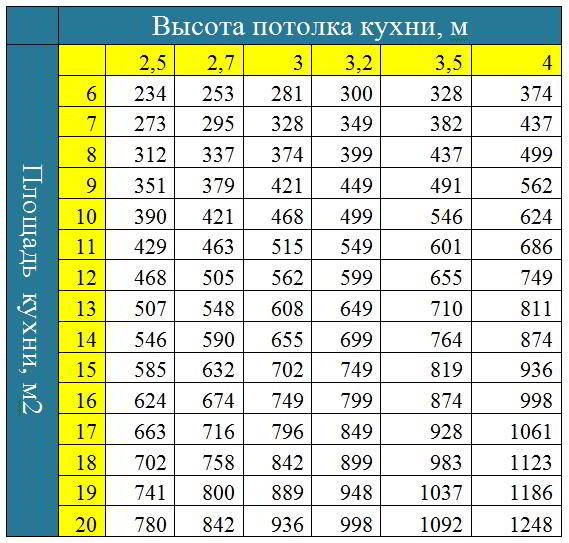
Calculated power table
Consideration of additional factors
Calculating the power of the hood, first of all, they make an adjustment for the type of stove. If a gas surface is installed in the kitchen during operation of which combustion products are formed, the air exchange coefficient is taken equal to 20.
The above calculation is suitable for recirculation hoods. If the device is equipped with a motor carbon filter, which creates additional resistance, the required performance is increased by 25%.
When the door to the kitchen is constantly open, the power of the device is calculated taking into account the area of the adjacent premises.
The performance of flow models depends not only on the characteristics of the device itself, but also on the throughput of the ventilation ducts.
Complicating factors
In addition to the nuances listed above, the installation method and location of the device can affect the device’s performance. Often, the hood is located a few meters from the ventilation hole and requires the installation of a long duct. To accurately place the pipe over the headset, you have to repeatedly turn or bend it. With each bend, the speed of passage of air masses decreases. Before finally calculating cooker hood, it is necessary to add 10% of productivity on each knee, on each turn.
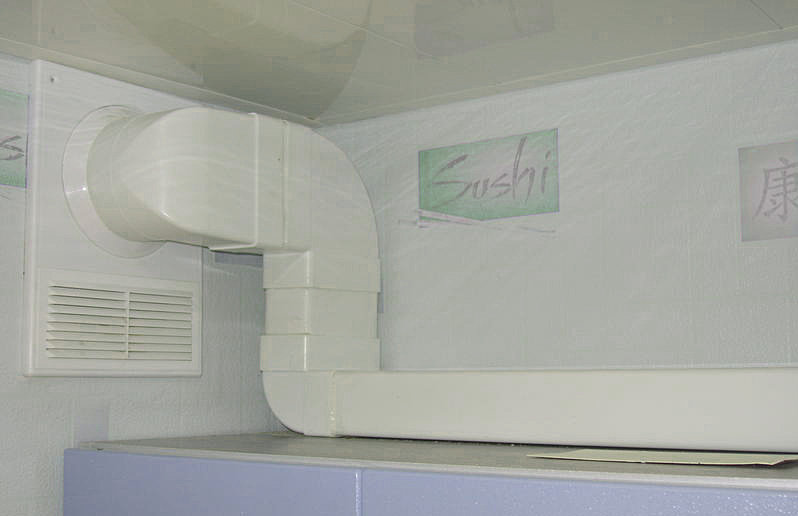
Knee-mounted duct
For example, the estimated performance of the device is 500 m3/ h If an air duct is connected to the hood, which will be bent at a right angle twice before being vented, the calculation will be as follows:
Q = 500 * 1.1 * 1.1 = 605 m3/ h
The structural peculiarity of the ventilation shaft, its contamination and clogging remain hidden from the eyes of the owner of the apartment. Therefore, in the final calculations, a minimum margin ratio of 1.3 is used. It compensates for the number of storeys of the apartment, the bends of the ducts and the throughput of the mine, which affect the loss of exhaust performance.
Power consumption and performance
When it comes to range hoods, buyers often confuse these two concepts. The capacity or power of the hood is the volume of air that a device can pass through itself in an hour of operation. The unit of measure is m3/hour.
Power consumption - the amount of electricity that the exhaust motor consumes per hour of operation. Measured in kilowatts / hour (kW / h).
These characteristics are directly related. The more powerful the engine is, capable of rotating the fan blades, the higher will be the performance of the unit.
The relationship of noise and power
Often, buyers ask themselves the question - why calculate the hood power if you can just purchase a device with maximum performance? The thing is that in such models the noise level is much higher, and they are quite expensive.
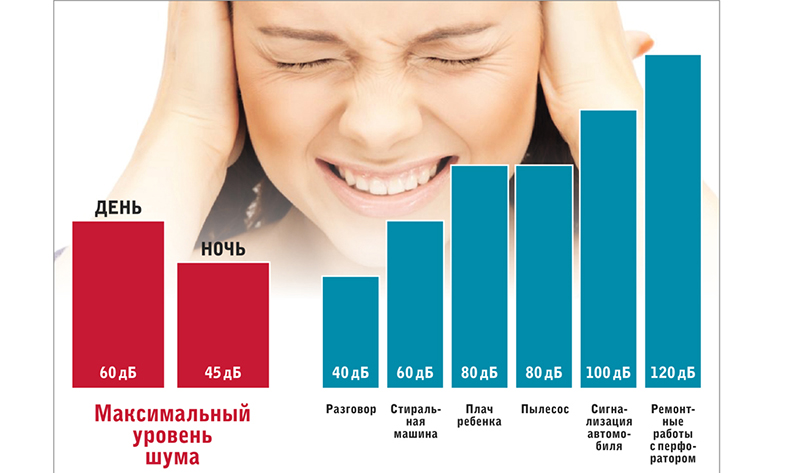
Noise levels
Excessive hum during work will quickly tire the hostess. In some cases, he is even able to drown out the conversation in the kitchen.
The higher the power of the device, the louder the noise it will make. Assessing this indicator by ear in a store is quite problematic - the room is large, filters and an air duct are not installed in the model, a monotonous hum is constantly present in the room. All this will lead to the fact that when buying a hood by ear will sound quieter than in the kitchen. You should focus on the power level, which is indicated in the technical characteristics of the product.
In modern models, the noise level is 30–55 dB, which roughly corresponds to human speech. Please note that the volume may vary depending on the selected speed. For example, the noise level of the same model can vary from 31 to 53 dB in different operating modes.
Silent hoods do not exist in principle, but manufacturers are doing everything to reduce this figure to a minimum.
Operating modes
It is almost impossible to meet devices that operate only at one power (maximum). All manufacturers complete the exhaust hoods with an operating mode switch (electronic or mechanical). It allows you to change fan speed depending on the needs of the owner.
Standard models come with three speeds. In the more expensive, their number can reach 5.
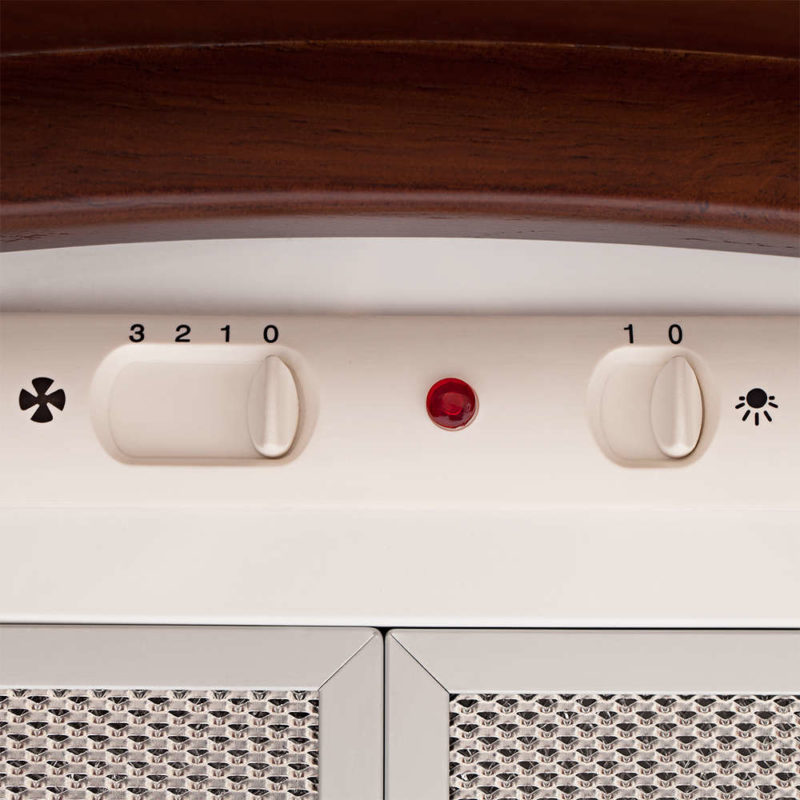
Hood control panel
The first speed helps keep the air in the kitchen clean. It can be included on an ongoing basis if 1 stove is prepared on the stove.
If the hostess cooks on two burners at the same time or bakes pies in the oven, it is worthwhile to turn on the hood in the second, more productive mode.
The third, maximum mode should be started if it is necessary to quickly clear the air in the kitchen, for example, when all hot plates are occupied or something burned out on the stove. To enhance the effect and speed up the process of removing odors, you can close the door to the kitchen.
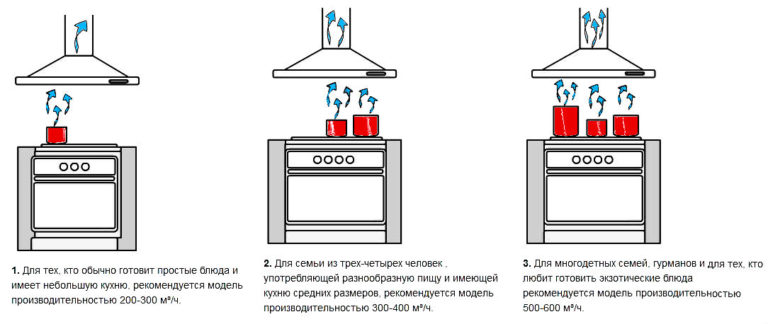
Hood operation modes
At the third, last speed, the hood will work at maximum power. To extend the life of the device, this mode should be turned on from time to time, and not use it on an ongoing basis.
How does size affect device power?
It cannot be stated unequivocally that a model 60 cm wide will be 50 cm more powerful than the model. However, on the whole, the tendency to increase the performance of the exhaust device with an increase in dimensions is traced. The thing is that wide hoods “collect” air from a stove with a larger surface; to do this with a small power is quite problematic.
Examples of models of different power
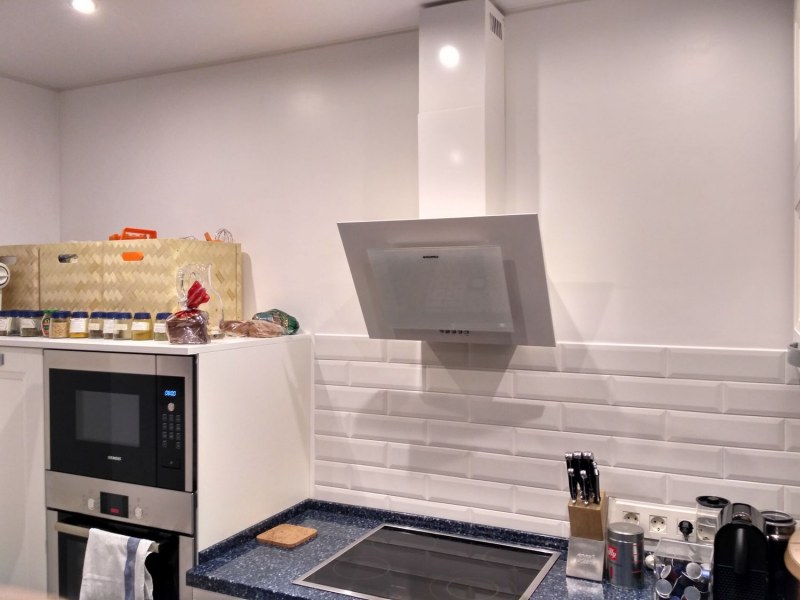
Hood MAUNFELD Tower in the interior
Consider some of the most popular models:
- MAUNFELD Tower C 60 black, 650 m3/ h Hood width 93 cm, maximum noise level 54 dB.
- ELIKOR Davoline 50 cream, with a productivity of 290 m3/ h Hood width 50 cm, maximum noise level 52 dB.
- ELIKOR Saturn 50 with a productivity of 180 m3/ h Hood width 50 cm, maximum noise level 48 dB.

